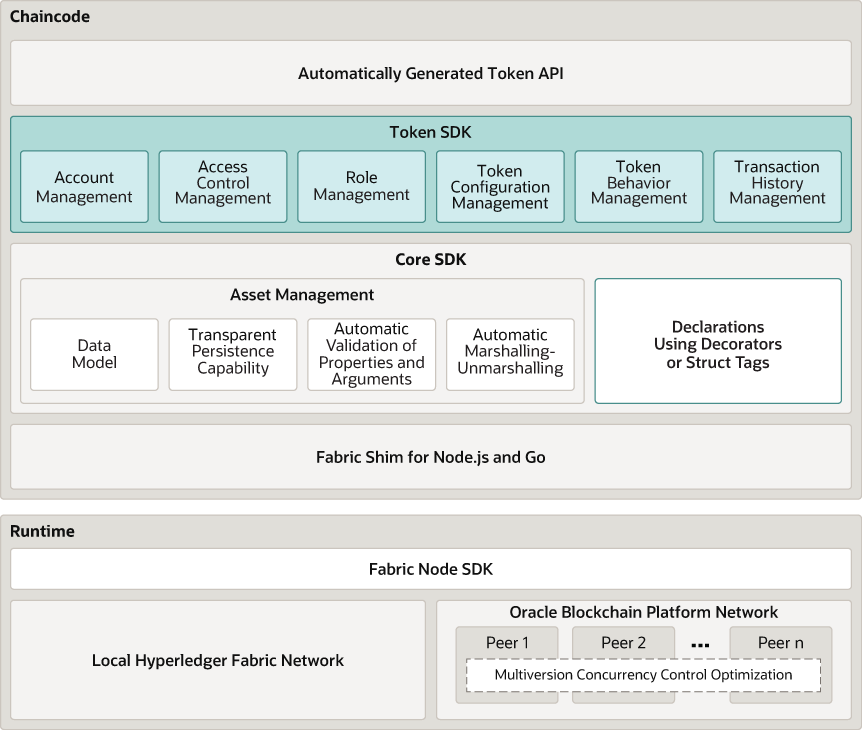Tokenization
Tokenization is a process where physical or digital assets are represented by tokens, which can be transferred, tracked, and stored on a blockchain.
By representing assets as tokens, you can use the blockchain ledger to establish the state and ownership of an asset, and use standard blockchain platform functions to transfer ownership of an asset.
Blockchain App Builder includes tokenization support: token classes and methods are automatically generated, and additional token methods are provided so that developers can create complex business logic for tokens. The automatically generated project contains token lifecycle classes and functions, CRUD methods, and additional token SDK methods, and supports automatic validation of arguments, marshalling/unmarshalling, and transparent persistence capability. You can use these controller methods to initialize tokens, control access, set up accounts, manage roles, and manage the life cycle of tokens.
The following diagram shows the token architecture implemented by Blockchain
App Builder, including the token API and token SDK.
- Automatically Generated Token API
- Blockchain App Builder automatically generates methods to support tokens and token life cycles. You can use these methods to initialize tokens, manage roles and accounts, and complete other token lifecycle tasks without any additional coding.
- Token SDK
- The Token SDK includes methods that help you develop complex business logic for token applications.
- Multiversion Concurrency Control (MVCC) Optimization
- The MVCC optimization for token chaincode can reduce errors for transfer, mint, burn, and hold operations.